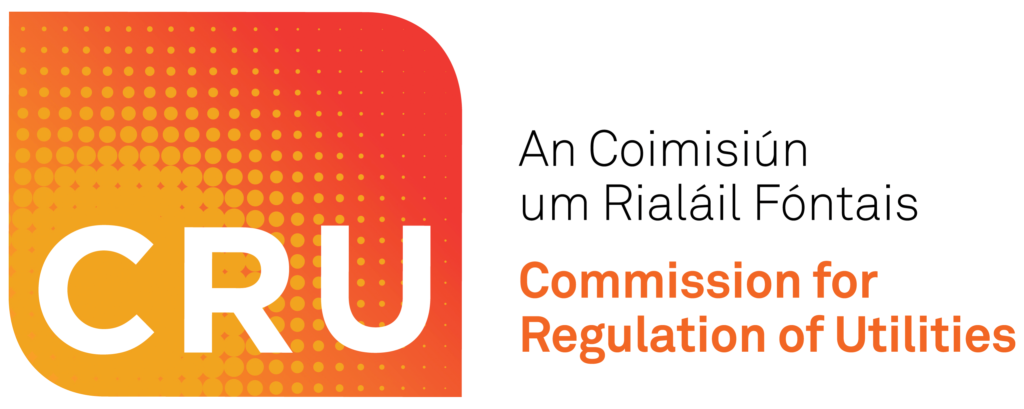CRU aims to incentivise demand reduction in challenging times

In August 2022, the Commission for Regulation of Utilities set out a proposed suite of new network tariffs.
The proposals included a number of ambitious new measures aimed at minimising cost impacts on consumers and specifically targeting a demand reduction response across the electricity system in light of the current energy crisis that Ireland faces.
The CRU’s response and decision was published in September and took account of the evolving situation with respect to the energy crisis, recent European Commission actions and the specific responses to the consultation.
The CRU proposals sought to address the two-pronged crisis of energy security and pricing that Ireland currently faces caused by the immense challenge of escalating gas prices as a result of the war in Ukraine and is further exacerbated by a short-term lack of supply which has increased the risk that the grid will be unable to meet aggregate forecast demand in the period 2022 to 2024.
Under the Security of Supply Programme of Actions published in August 2021, the CRU directed EirGrid to procure emergency generation capacity, and on the demand side the CRU has put in place new criteria for the evaluation of data centre connections in order to mitigate security of supply risk.
An important remaining tool available to the CRU is the use of regulated network tariffs to incentivise changes in end customer behaviour to manage demand, and specifically to move consumption away from peak hours when the network is under most demand stress.
While it is unusual to implement changes to the structure of network tariffs in such a short timeframe, the CRU’s view was that urgent and proportionate action was necessary to tackle the electricity security of supply issues facing both Ireland and Europe, that all options need to be explored.
The situation regarding the energy crisis across Europe also evolved during the consultation period, with the European Commission noting that the short-term outlook on European energy security had worsened and that it would present proposals to incentivise electricity demand-reduction across the EU to reduce total monthly gross electricity consumption during pre-defined peak hours and how customers who reduce demand were compensated.
In this context, the CRU needed to reflect on the requirements of the proposed regulation which lean more towards compensation for flexible demand rather than additional costs or penalties for inflexible demand.
The CRU considered this evolving situation both domestically and across Europe and revised elements of the set of measures to be implemented this tariff year 2022/23. While the tariff decision covered a broad range of measures, the key impacts were in the areas of customer protection and demand reduction.
While it is unusual to implement changes to the structure of network tariffs in such a short timeframe, the CRU’s view was that urgent and proportionate action was necessary to tackle the electricity security of supply issues facing both Ireland and Europe, that all options need to be explored.
Customer protection
The unprecedented increases in energy prices are impacting all consumers and businesses. The CRU has approved the distribution and transmission revenues for 2022/23 with a view to minimising the impact on all customers. Some of the key points in the decision were:
• The unwinding of the rebalancing of the €50 million large energy users’ costs established by Government in 2009 that will see, domestic customer bills reduced by an estimated average of €40 for the year (-12 per cent).
• A minimised revenue requirement to be recovered by the network companies, reducing the overall distribution revenue requirement by circa €54 million and the overall transmission revenue requirement by circa €14 million for 2023.
In parallel to this work, the CRU has set the PSO levy at -€491.25 million, delivering a negative levy. From a customer impact perspective, this will result in a reduction of annual bills by €89.10 for domestic customers and €311.51 for small commercial customers.
Demand reduction schemes
There was a very positive response to the proposed voluntary demand reduction schemes by ESB Networks under its Beat the Peak programme that was launched in November for both domestic and commercial customers. This model of customer engagement through incentive-based schemes is consistent with the proposed European Council approach to compensate those who reduce demand.
The CRU decided to accelerate the schemes proposed that will require ESB Networks to expand its proposed suite of measures to encourage and enable demand side response amongst domestic and commercial electricity users. At the transmission level, the CRU will engage with EirGrid and other stakeholders to develop appropriate demand reduction schemes that complement, and support actions being taken by the European Commission.
Peak (‘ToU’) network tariffs
The CRU maintains the need to continue with tariff structural reforms that target demand flexibility. One of the key concerns was that some business customers would not be able to reduce or shift peak load or, that others could not make alternative commercial or technical/operational arrangements in time for this winter.
In response, the CRU has modified some of its initial peak tariff proposals for the introduction of a peak and non-peak tariff between 17:00 and 19:00, for customers which will enable them to benefit from reducing load at peak times.
These modifications will reduce rates at off peak times, therefore ensuring that customers that have a flat load profile, and cannot shift load, will not be penalised.
The impact of network charges will depend on how electricity suppliers reflect these tariff signals in their retail charges so that customers are provided with an appropriate price signal to adjust their behaviours and therefore benefit.
The customer groups that were targeted included domestic customers and small non-domestic customers with a smart meter and who have opted for smart services. These will be charged a peak rate that reflects a 10 per cent differential with the day rate, encouraging them to shift their usage from peak times to benefit from off peak rates. Medium-sized customers who are quarterly hour metered will be charged a peak rate that reflects a 10 per cent differential with the day rate.
In addition, all large energy user (LEU) and XLEU customers will see the introduction of a peak and non-peak tariff (between 17:00 and 19:00) that reflects a 10 per cent differential between the rates.
As per the distribution charges, these modifications will reduce rates at off peak times, therefore ensuring that customers that have a flat load profile, and cannot shift load, will not be penalised.
T: 01 4000 800
E: info@cru.ie
W: www.cru.ie






